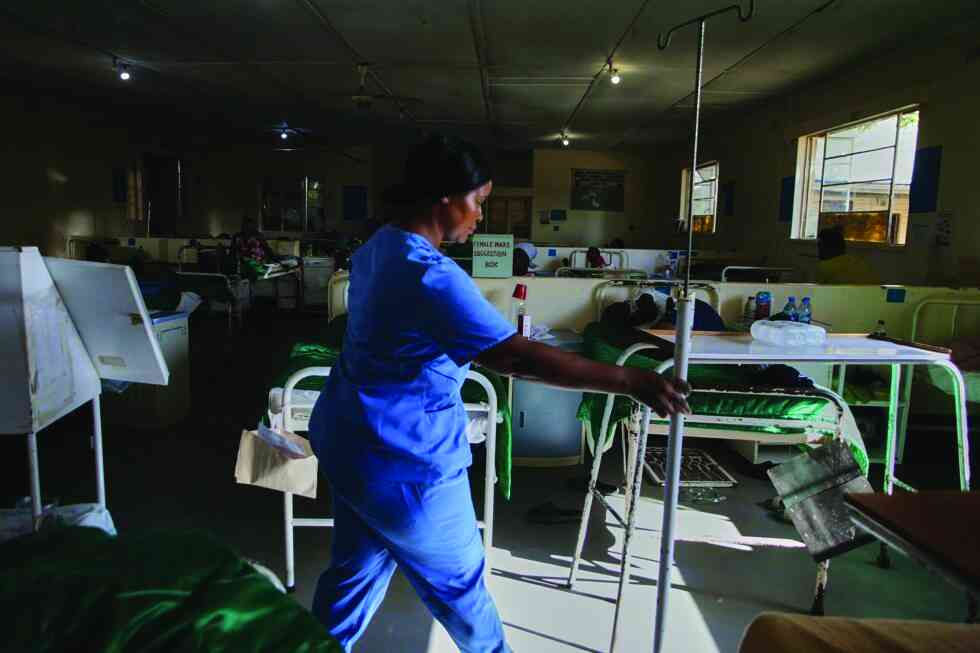
A ZW$24 million revolving facility established by the Industrial Development Corporation of Zimbabwe (IDC) three years ago has saved 7 000 jobs and created 2 000, official data obtained showed this week.
The ZW$24 million was worth over US$1 million when it was established, but is now equivalent to about US$35 000 due to extensive currency erosion.
Until a few years ago, the IDC operated as an investment vehicle housing state interests in firms cutting across economic sectors.
But sentiment towards re-engineering its operations had been growing with industries pointing out that it had failed to keep pace with emerging trends.
Industrial chambers have always wanted IDC to operate along the lines of the Industrial Development Corporation in South Africa to give impetus to ongoing efforts to revive hundreds of firms that have collapsed due to mismanagement.
But in 2019, government extended the ZW$24 million revolving facility to the firm to bail struggling industries.
In an 18-page paper titled The State of Industry and Commerce submitted to Cabinet recently, Industry and Commerce minister Sekai Nzenza said the package had grown to ZW$2,2 billion (about US$3,3 million), and the intervention had lifted a significant number of firms out of the doldrums.
“The entity (IDC) assumed the lending role in 2019 with ZW$24 million seed money and to date, the revolving funds have grown to ZW$2,2 billion,” Nzenza said in the paper exclusively obtained by businessdigest.
- Financial inclusion critical for African agriculture success
- Industry cries foul over new export surrender requirements
- Real estate key enabler of economic activity: Nzenza
- Economic situation worries Japan
Keep Reading
“Additionally, over 2 000 new jobs have been directly created and a further 7 000 jobs preserved across benefitting sectors. Furthermore, IDC (recently) declared a dividend of ZW$300 million for the year 2021 to the government, for the first time in 12 years and this evidence points to improved operations by our state-owned enterprises.”
The ZW$2,2 billion is a small part of the US$2 billion that Zimbabwe’s industries have been scouting for to return to full scale production.
Manufacturers have taken some of the most painful blows since Zimbabwe relapsed into damaging de–industrialisation from early 2000.
But in her report, Nzenza said the industry has rebounded.
“There has been a remarkable rise in the manufacturing sector’s contribution to gross domestic product (GDP) from 15,7% in 2019 to 18,4% in 2021, thus becoming the third largest contributor after agriculture and mining,” she told cabinet.
“This is in line with the Zimbabwe National Industrial Development Policy (2019-2023) objectives of setting manufacturing on a sustainable growth path.
“The increase in local manufacturing sector productivity contributed to the huge leap in total exports from US$2,52 billion in 2021 to US$3,3 billion during the same period in 2022,” Nzenza said.
She said she was extending the industrialisation agenda to the rest of the country to help rural firms tap into State resources.
“The Zimbabwe National Industrial Development Policy (2019-2023 recognises that the majority of the populace is domiciled in rural areas,” Nzenza said.
“Value addition and beneficiation industries are being established in provinces and marginalised areas where resource endowments are domiciled to ensure inclusivity.
“These initiatives are being complemented by other programmes, which include the promotion of standards and quality assurance, economic empowerment initiatives, consumer protection, investment, export development and recommendation for fiscal support,” she added.
In 2020, the Zimbabwe National Chamber of Commerce (ZNCC) said a lifeline of up to US$100 million must be deployed to recapitalise the IDC and bolster its capacity to bailout struggling companies.
“The IDC should be restructured to make it a development finance institution, which supports industry than for it to remain an investment vehicle as it is now,” the ZNCC said.
“There is need to capacitate IDC by US$100 million, which is equal to the minimum capital requirements for large indigenous commercial banks and all foreign banks.”
The chamber is convinced that once this is accomplished, the IDC will be well-placed to intervene with cheaper funding to the country’s struggling industries.











